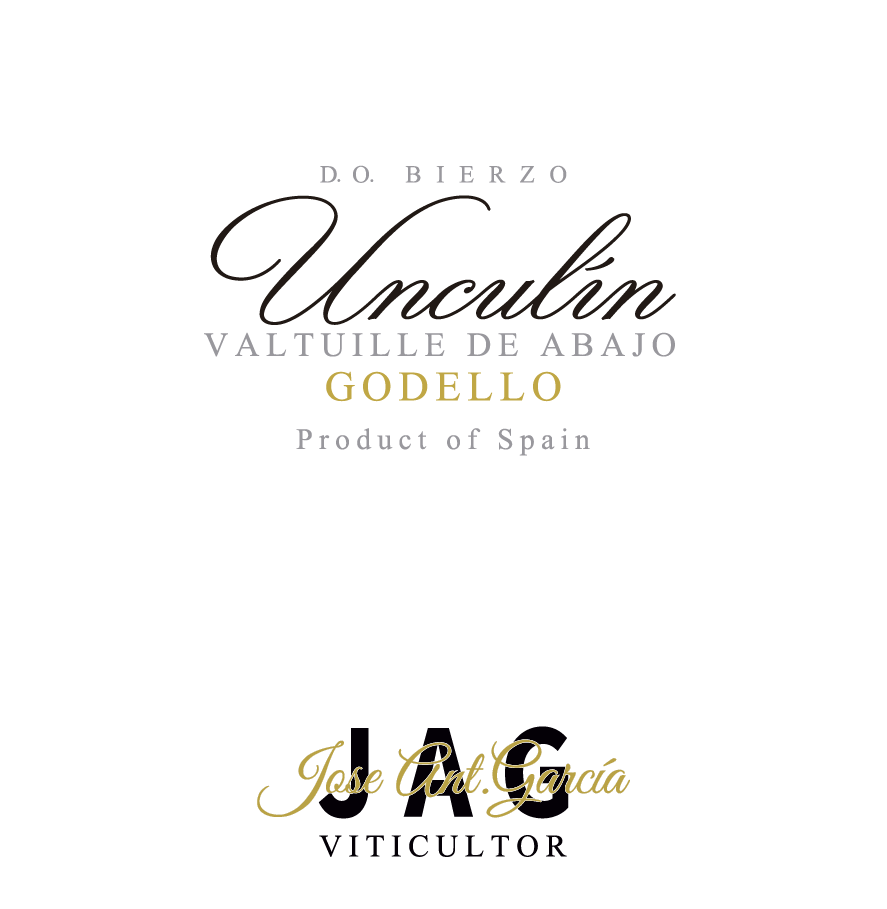Jose Antonio García
Unculín Blanco Valtuille Vino de Villa Bierzo 2022
Jose Antonio García Unculín Blanco Valtuille Vino de Villa Bierzo 2022
J
ose Antonio García and his wife Julia Peña García are at the forefront of the next generation of vignerons in Bierzo, leading the charge towards wines of place and definition. Their familial roots in Bierzo are fundamental to them—Jose’s mother is a native of Valtuille de Abajo, and his father is a native of Corullón—and Jose and Julia’s families have owned vineyards in Bierzo for generations. All of the work in the vineyard and winery is performed manually with the use of gravity, minimal intervention, and no chemical inputs. They farm and perform all of the work in the irvineyards themselves, which is signified by the term viticultor on their bottles. Quality, excellence, and soul are always the philosophy. JAG is defined by small production, very low yields, artisanal methods, and minimal intervention, yielding wines amongst the finest in Bierzo.
Bierzo has adopted a new quality-based classification system for its wines, closely following the Burgundian structure of regional, village, and single-vineyard wines (called Paraje in Bierzo). In the Vino de Villa classification system, 100% of the grapes must come from vineyards within the designated village, and yields must be at least 20% below the limit for D.O. Bierzo (25% for Paraje wines). Other quality-conscious regulations have been implemented that now make the Bierzo appellation a leading producer of fine wine not only in Spain but in the whole of Europe.
JAG’s minerality-driven cuvée Unculín Blanco is a blend of 70% godello and 30% doña blanca from vineyards planted from 1920 to 1940 at 500m to 550m in the village of Valtuille de Abajo, making it a Valtuille Vino de Villa designated wine that gives Premier Cru Chablis a run for its money. Crucial to the quality and complexity of JAG’s wines is the genetic heritage of their ancient vines, planted mostly before the industrialization of Spanish wine. With some vines in Valtuille over 100 years old, their vineyards provide an unspoiled genetic window to an era before modern clones were selected for higher yields. It’s one thing to produce wines naturally; it’s another thing entirely to produce naturally-made wine from old-vine vineyards like these, which are among the oldest in Europe. The viticulture is strictly organic, and the only compost used is local, organic chestnuts, which grow in the vineyards.
Tasters often remark that JAG’s genre-defining Valtuille godello tastes nothing like most other modern versions of the godello grape on the market. This observation is objectively true, as it has much more soul and depth than the average offering. The answers lie in the exceptional provenance of the vines, indigenous fermentations, miniscule yields, and hands-off winemaking.
Vinification – After hand-harvesting in small crates and a selection process in the vineyard, the grapes are destemmed and slowly crushed in a vertical press. Each variety is vinified separately by spontaneous fermentation with native yeasts. The godello grapes macerate with the skins for 24 hours without temperature control before being pressed. Half of the godello juice was left to settle and fermented in stainless steel tanks. The other half was fermented in used 500L French oak barrels with the gross lees. The doña blanca was fermented in a used, large oval French oak foudre. No malolactic fermentation. After fermentation, the wine is blended and rests for eight months in stainless steel tanks before bottling.


